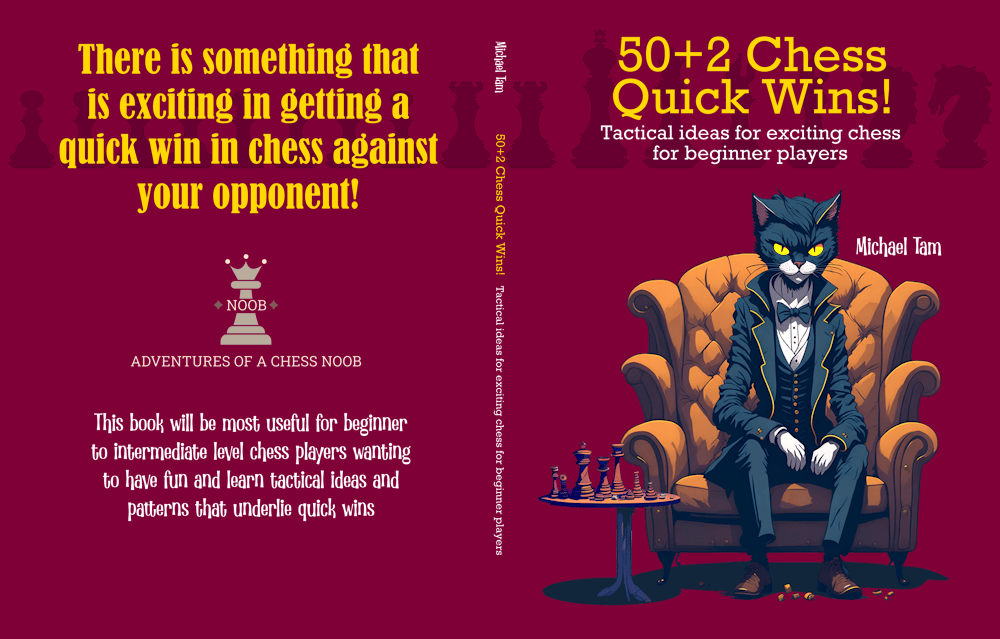
Ruy López? WIN with Jaenisch Gambit, Exchange Variation Qh5+! 🤩
#ruylopez #jaenischgambit
Recently, the chess.com personality quiz identified that I was an assassin 🥷 and I going to own it! 🤣 Perhaps this is well demonstrated by my preferred response to the very good Ruy López Opening (1. e4 e5 2. Nf3 Nc6 3. Bb5), the Jaenisch Gambit (3… f5)!
My opponent with the White pieces was a committed Ruy López Opening player. Looking at their stats on OpeningTree.com, it was their most frequent opening with White, having played it almost 1,800 times and winning 54% of games. However, despite their experience with the Ruy López, they’d only encountered the Jaenisch Gambit 14 times, less than 1% of games, and they’d also lost most of them!
In this this game, we went down one of the most common lines in the Jaenisch Gambit, the Exchange Variation (4. Bxc6 dxc6) and we immediately see the power of the Jaenisch. White plays the most common sequence of moves – first, (5. Nxe5) to which Black must respond with the critical move (5… Qd4)! This forks White’s e-pawn and knight, but note, it’s also on the long dark square diagonal. In this position, White finds the single most popular move (6. Qh5+?!). The move looks great but is a mistake [-2.3] and in the position, Black has a major win ratio advantage (70%) over that of White (27%)!
![]()
Historical note:
Carl Ferdinand von Jaenisch (1813-1872) was a Finnish and Russian chess player and theorist and is best known for his analyses of the Petrov’s Defense, and of course, the Jaenisch Gambit in the Ruy López Opening, the topic of today’s article. He published on these openings in the early 1840s.

The first game of the Jaenisch Gambit in the LumbrasGigabase occurs once again in the extraordinary series of games between John Cochrane and Moheschunder Bannerjee in 1850, Calcutta (Kolkata). Cochrane, likely familiar with Jaenisch’s analyses, employed it against Moheschunder’s Ruy López Opening with devastating effect. In (Bannerjee — Cochrane, 1850, Calcutta, India), Bannerjee also played into the Exchange Variation, 6. Qh5+ line. The insight is that even for strong players, their intuition will lead them down this path. It LOOKS correct! However, by the time they realise that it’s not, it’s too late!
![]()
The next few moves practically play themselves. Against check, Black responds with (6… g6!). White will have probably calculated this and captures the pawn with (7. Nxg6). In other openings, this pattern usually very strong from the attacker as Black’s h-pawn is seemingly pinned to the h8-rook. However, in this specific position, Black’s queen is on the long dark square diagonal, and so the h7-pawn is not pinned, and so (7… hxg6)! 🤩
Now, I’ve played games where White immediately blunder their queen by capturing the rook – and after (8. Qxh8 Qxh8), White will often resign! In this game, White plays the right move (8. Qxg6+) and we now need to play the second critical move in the line, which is (8… Kd8!).
Let’s take stock of the position. There is material equality, but it’s very unbalanced. White has lost two minor pieces, while Black has lost a minor piece and three pawns. Although Black’s king seems exposed and has lost the right to castle, White’s queen oddly seems to have no targets as everything is defended and no meaningful checks are possible! Indeed, Stockfish gives a winning evaluation of [-2.3] to Black in the position. Tactically, Black can develop while harassing White’s queen, winning tempo. Black can also make use of the semi-opened kingside files by launch an attack on White down that side, especially as they may be relatively forced to commit to castling short.
After (9. d3), White’s best move, Black has several options. The most accurate move is (9… Ne7), developing the knight and winning tempo on White’s queen. This was played by Cochrane in (Bannerjee — Cochrane, 1850, Calcutta, India)– check out the game in my chess.com library! Cochrane does indeed attack White on the kingside and Bannerjee loses quickly.
Another speculative and very tricky line is (9… Bd6!?). Objectively, this draws the game back to equality, but if White castles short, then there is a delicious 6-move forced checkmate that makes use of semi-opened h-file! Check out the PGN and the video for the line!
In this game, I ended up developing my king’s knight to the “normal” square (9… Nf6?), which Stockfish rates as a mistake, bringing the game back to equality [0.00]. However, that requires White to find (10. Bg5), which while not obscure, is also not the most intuitive move. In essence, White must force a trade down of pieces to neutralise Black’s attacking chances. I wanted my knight on f6 as I thought that the extra pressure on White’s e4-pawn, as well as a possible future knight attack to g4 would be good. I wanted to nudge White towards castling kingside!
Instead, they kicked my queen back with (10. c3?!). I thought for quite a while in this position. My candidate moves were Qd6 (which Stockfish evaluates as the most accurate), but I liked the punishing tactical possibilities of (10… Qe5!?), which is what I eventually played. My logic? I wanted to keep my queen on the long dark square diagonal, so it’s ever ready to defend my h8-rook. But more than that, I had a hunch that White was feeling a pressure to castle short, and if they ever lost sight of continuity, a risk in an unfamiliar and complicated position, they’d forget that the h-file is semi-open and blunder a mate.
And my assassin’s intuition paid off! Without an obviously better move, White carelessly castled, blundering a mate-in-one; (11. O-O Qxh2#) – good game, GG!
The big takeaway from this game is to consider giving the Jaenisch Gambit a go against the Ruy López Opening! It’s really quite good at the beginner-intermediate level, and you’d often end up with very fun games!



